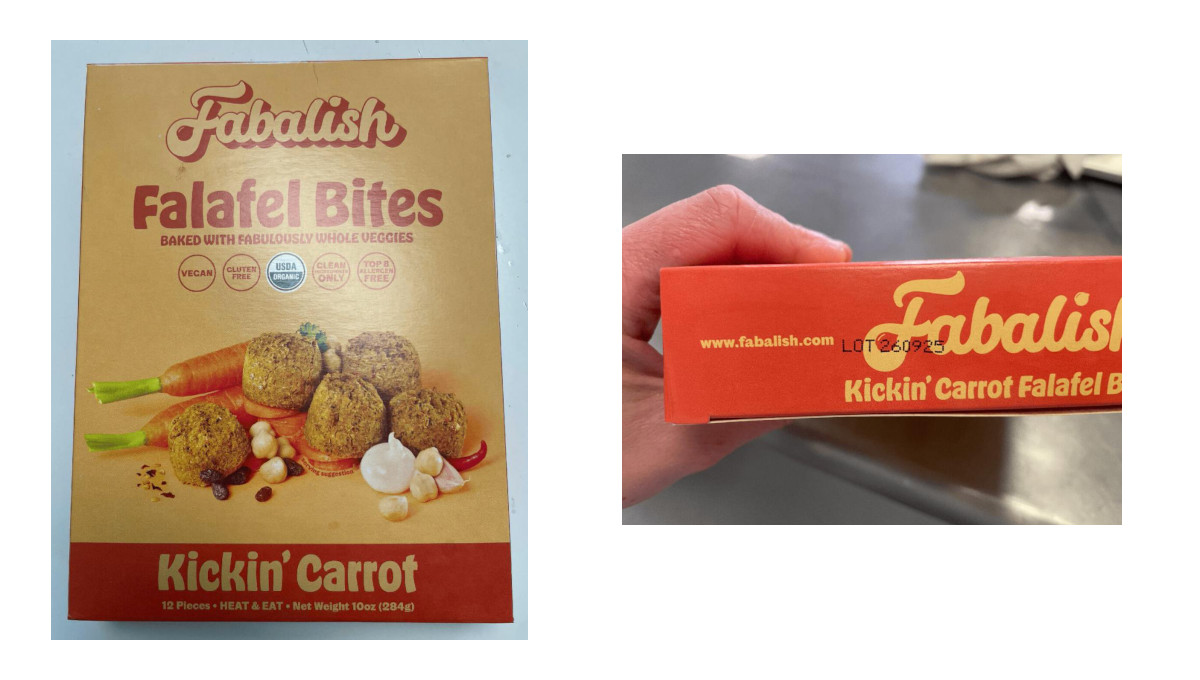
If you grew up in the South, when you think of autumn, pumpkin pie's fluffier, orange-hued cousin sweet potato pie might come to mind. Indeed, sweet potato pie is a staple that emerged out of the enslaved population of the deep South, where it has remained a symbol of home and family for generations. While there are a number of iterations of this pie, its texture and flavor are distinctive, and executing these to perfection can take know-how to master.
As a professional chef with a background in cultural anthropology, I have long been interested in the origins of classic dishes. I generally do a lot of research to find the most authentic recipes, making them repeatedly until I have perfected them. This is no different for a classic Southern-style sweet potato pie .
Though I sometimes play with permutations on the recipe, I am always mindful of the basics. There are some core mistakes that are often made that can compromise that quintessential flavor and texture that makes this a nostalgic recipe, and I am here to share those with you. Read on to discover the fundamentals to making sweet potato pie like a pro.
1. Mistake: Only relying on canned sweet potatoes Though often used interchangeably in the U.S.
, yams and sweet potatoes are not the same thing. They have different botanical classifications and distinct characteristics. Yams, which typically grow in humid environments across Asia and Africa, have purplish skin, pale-hued flesh, are starchier, and are mild in flavor.
Sweet potatoes, by contrast, are more common in the U.S., typically having more peachy-hued skin, flesh that is moister, and a higher sugar content, making them better suited for desserts.
Though canned yams, which are actually sweet potatoes, can be used for a sweet potato pie recipe, fresh ones will yield better results in both flavor and texture. When choosing sweet potatoes for pie , it is important to find ones that are darker in color, like the Red Garnet or Jewel varieties, which are sweeter and juicier. These may occasionally be labeled as yams, unless you purchase them from a farmer's market.
Sweet potatoes are best for a pie when baked whole in the oven or air fryer, or, when peeled, cubed, and roasted, as opposed to boiled or steamed. These cooking methods will help to caramelize their natural sugars, enhancing their flavor and giving them a less soggy texture. 2.
Mistake: Eyeballing the ingredients There is a common culinary saying that "cooking is an art, baking is a science." This has some merit in that if you adjust the recipe for a soup or stew, the result can still be just as delicious and aesthetically appealing. Baking, however, requires more accuracy for recipes to turn out according to plan.
This is doubly true for recipes, like a sweet potato pie, where the custard filling can be very susceptible to minor deviations, causing it to remain loose and weepy, rather than setting up, during the baking process. At the very least, make sure you follow the recipe to the letter, purchasing the exact ingredients indicated and measuring them precisely. If you really want to guarantee perfection, you might want to start using a scale for all of your baking endeavors .
Measuring ingredients by weight, rather than volume, is far more consistent and will generally yield better results. The key is having a good quality digital scale in the kitchen and knowing how to use it. Additionally, you may want to hunt for a recipe that was developed using weight versus volume measurements, as these will typically be more reliable.
3. Mistake: Relying on the pumpkin pie spice While pumpkin pie spice is all the rage, this is one place where its presence is not required, nor is it authentic. Pumpkin pie spice is typically composed of cinnamon, ginger, nutmeg, allspice, and cloves, or some variation thereof.
A classic sweet potato pie is generally made from just cinnamon and nutmeg, though occasionally cloves or ginger are added for flair. While it may seem that this spice blend could easily be substituted for the individual seasonings, it can overwhelm the sweet potatoes, masking their natural sugary flavor, which differs from the more vegetable-forward notes of hard winter squashes, like pumpkin. If you are seeking to incorporate additional flavor without completely changing the inherent taste of a sweet potato pie, there are some options.
There are many different types of cinnamon you can choose from , each with its own unique flavor profile. While the Cassia variety is most commonly sold in grocery stores, True, Padang cassia, and Saigon types all have unique levels of sweetness and heat that can completely transform your sweet potato pie. Try them individually or in combination for a truly exotic experience.
4. Mistake: Not adding cream cheese Historically speaking, sweet potato pie always contained dairy, but not just any dairy — evaporated milk. This dairy product, which emerged in the 19th century, has been a staple in this recipe because it confers a luxurious texture and a sweet flavor without the need for refrigeration.
At the very least, evaporated milk is a must when baking a sweet potato pie. That said, there is an alternative that, while less authentic, is what your sweet potato pie is missing — cream cheese. Cream cheese, which by law must contain at least 33% milk fat and no more than 55% moisture, helps the custard base of a sweet potato pie to set up more easily, while giving it a light and fluffy texture.
It also has a tangy flavor that can offset the sweet potatoes and balance out the heat of warm spices, like cinnamon and nutmeg. Simply swap an 8-ounce block of cream cheese with whatever dairy is recommended in the recipe. For best results, make sure the cream cheese has been softened at room temperature before blending the ingredients together.
5. Mistake: Not adding brown butter One ingredient that sets pumpkin pie apart from a classic sweet potato pie recipe is the addition of butter. Most recipes call for softened, unsweetened butter to be blended into the filling, giving it a rich flavor, velvety texture, and a smooth mouthfeel that coats your tongue, making this dessert infinitely satiating and comforting.
While you should at the very least incorporate good quality, high-fat butter, there is a swap that a classic sweet potato pie recipe has been missing — brown butter. Brown butter is made by cooking down butter until all the excess moisture has evaporated, the milk solids are concentrated, and these begin to turn a golden hue. What remains has an intense, toasty, nutty, caramel-forward flavor that offsets and enhances the sweetness and spices of the remaining ingredients in the pie filling.
If you really want to elevate brown butter, try tossing in a pinch of ground cinnamon and freshly grated nutmeg to infuse it with the very flavors you will be adding to the remaining pie filling. You can also add some dried milk powder to increase the number of milk solids, thereby intensifying the flavor of brown butter. 6.
Mistake: Skimping on the quality of the vanilla extract Another primary ingredient in most Southern-style sweet potato pie recipes is vanilla extract. Though imitation vanilla can be used effectively in some desserts, because of the simplicity of a sweet potato pie, it is a good idea to stick with a pure vanilla extract that is of high-quality. Pure vanilla extract is made by steeping vanilla beans in a combination of water and ethyl alcohol.
This solution helps to extract the primary flavor compound found within vanilla beans, namely vanillin. To be considered pure, vanilla extract must consist of 13.35 ounces of vanilla beans for every gallon of liquid and should have an alcohol content of at least 35%.
While vanilla extract comes in varying types, if you want to bake like a pro , use one made without corn syrup or other additives. Vanilla extract can be made from various kinds of beans, each having unique characteristics. Most extracts are made from Madagascar vanilla.
For an intense, almost chocolate-forward flavor, check out pricey Mexican vanilla, though keep you eye out for counterfeits. For a subtle, fragrant, almost floral extract, search for ones made from Tahitian vanilla, like those from Nielsen-Massey , which can also come with a hefty price tag. 7.
Mistake: Not creaming the ingredients enough One key difference between pumpkin and sweet potato pie is the texture. The filling of a pumpkin pie tends to be creamy, yet firm. That of a sweet potato pie is more on the fluffy side, yet still luxurious.
The key to achieving this texture is to purée the ingredients until they are thoroughly combined, smooth, and plenty of air has been incorporated. While this is often done using a hand mixer, there are other tools that are better suited for this process. A hand mixer is effective at integrating air into the filling, but can leave behind clumps of sweet potato and fail to thoroughly dissolve the sugar, creating a grainy mouthfeel in the baked pie.
A blender or food processor will do a much better job at breaking down the sugar granules, while ensuring all of the sweet potato has been dissolved and no stringy bits remain. For easier clean up, opt for an immersion blender. This handheld device is a great tool for this purpose, though it may require a little more time and elbow grease to get all the ingredients emulsified.
8. Mistake: Only using a single crust If authenticity is what you are looking for, skip this suggestion altogether. That said, if you are searching for the ultimate variation on a sweet potato pie , you may want to consider a double crust.
This viral sensation combines two desserts into one amazing hybrid. It takes a traditional sweet potato pie recipe and tops it with the luxurious filling from a classic Southern chess pie recipe. When this combination of eggs, melted butter, sugar, cornmeal, and flour hardens, it has a crisp consistency resembling the top of a crème brûlée, which creates a party of different textures bursting in your mouth.
If this sounds like too much of a stretch, you can also change things up by nestling the filling for a classic sweet potato pie between two pie crusts, for a double crust pie with a creamy center. Just make sure to dock both the top and bottom pie crusts to prevent them from bursting open and coat the exterior with an egg wash applied delicately using a brush. The finished pie will be the perfect juxtaposition between the velvety filling and the flaky crust, surprising your guests when they dig in.
9. Mistake: Not adding a layer of brown sugar to the bottom If there is one person who knows a thing or two about soul food, it is legendary, Grammy-award winning singer Patty LaBelle. The singer has become well-known for her sweet potato pie recipe.
This pie has been a popular staple of the Thanksgiving dinner table since it debuted in 2015. One of the secrets that keeps this pie flying off of store shelves is the addition of brown sugar to the recipe. In this case, the sugar is not to replace what's in the filling, but is sprinkled onto the pie crust, before it is added.
The genius of this technique is that as the pie bakes, the sugar acts as a barrier between the moist filling and the flaky crust, protecting it from becoming soggy. It also adds a layer of crunch and a rich, caramel flavor to the pie that helps to enhance the sweet, creamy filling. While you can use any kind of brown sugar you would like, dark brown sugar contains more molasses, giving it a more robust, almost umami-rich flavor.
You could also use muscovado or turbinado sugar instead of the brown sugar for similar results. 10. Mistake: Only using a store-bought pie crust It is worth mentioning that there are plenty of decent store-bought pie crusts that are convenient, affordable, and great to use in a pinch.
That said, there is nothing quite like the flavor and texture of a pie crust that has been made-from-scratch, using high quality ingredients. Though pie crusts made from butter alone have great flavor, the best pie crusts are made using lard (or at the very least vegetable shortening). Lard is a popular ingredient for pie crusts because it yields a flakier crust.
It also has a higher melting point than butter, making pie crust much easier to work with. Pie crusts that have both lard and butter in them will have that rich, buttery flavor and benefit from the unique textural advantages conferred by the pork fat. Before working with a homemade pie crust, it is crucial to chill it well.
Failure to do so will cause the fat to melt, which will make the dough sticky and unruly to handle. Chilled pie crust will also produce a flakier texture. 11.
Mistake: Not blind baking the crust When baking a sweet potato pie, you should try blind baking the crust to help mitigate sogginess, reduce shrinkage, and prevent it from cracking. The process is quite simple, but failure to do so can make or break your finished pie. To blind bake a crust, start by rolling out the pie dough and placing it on the bottom of the pan.
Next, line the crust with parchment paper or aluminum foil before layering it with dried beans or pie weights, like these universal fit pie weights from Pie Armor . The crust should be baked for roughly 20 minutes at 375 degrees Fahrenheit before the lining and weights are removed. Before returning the crust to the oven, dock it with a fork, which will allow for steam to escape and prevent it from puffing up and cracking.
Bake for another 15 minutes until golden brown. Once cooled, the crust is ready to fill. If you notice the crust is beginning to get too dark around the edges before the filling of the sweet potato pie has set, cover it with aluminum foil to prevent it from burning.
You can also purchase a fancy gadget known as a pie crust protector, like this resusable 10-inch pie crust shield from Norpro . 12. Mistake: Only using the oven In case you haven't jumped on the air fryer bandwagon yet, here is yet another use for this incredibly versatile appliance that can transform your pie baking game.
Believe it or not, you can absolutely make a sweet potato pie in the air fryer . It just requires a little finagling and a couple of adjustments to have the perfect holiday dessert in a flash. Depending on your unit, an air fryer may not fit a full-sized pie pan.
This means you may have to split the dough and filling into two smaller-sized pie pans, like this 5-in ch pan set from Cuisinart . Additionally, because an air fryer is essentially a tiny convection oven, it will likely bake the pie in a shorter amount of time. The precise amount of time will vary depending on your specific unit, so it may require a bit of trial and error to find the sweet spot for the pie to be done.
Lastly, you may opt to skip the blind baking process if you intend to use the air fryer, as the shorter cooking time and air circulation within the unit will offset the need for this step. 13. Mistake: Over or under baking the pie One of the biggest mistakes one can make when baking a pie is over or under baking it.
It is so easy to think the filling is done and remove it before it is set. It can be equally as simple to keep it in the oven too long, causing the filling to crack and get gummy and leaving you with a crust that is incinerated. Fortunately, there are some simple techniques you can use to determine the doneness of your sweet potato pie.
First, give the pie a quick shake. If the filling is still loose and liquid-y, it is not ready. If it jiggles, the way JELL-O does, but is set, it is likely ready.
Additionally, you may notice the filling has puffed up a bit, indicating it is done. Lastly, if you insert a toothpick or the tip of a paring knife into the center of the pie, it should come out clean. If your sweet potato pie passes all of these tests, it is ready to come out of the oven.
14. Mistake: Not giving the pie enough time to set The last step to making a dynamite sweet potato pie is allowing it plenty of time for it to set after it has been removed from the oven. This is true for all custard-based pies, and it has to do with science.
As the pie bakes, the protein strands in the eggs used for the filling will begin to coalesce, helping to thicken the custard. This process will continue after the pie is removed from the oven, allowing it to attain the perfect texture, which is creamy, yet firm enough to slice without the filling oozing out from the pie crust. Sweet potato pie requires at a bare minimum four hours to rest, though 24 hours is best.
Because the filling contains dairy and eggs, it is crucial that you transfer the pie to the refrigerator as soon as the bottom of the pie pan is cool enough to the touch to handle with bare hands. The pie should not remain at room temperature for longer than two hours, otherwise it can be susceptible to pathogens. A sweet potato pie can last for up to three days in the refrigerator.
It should never be stored at room temperature..














